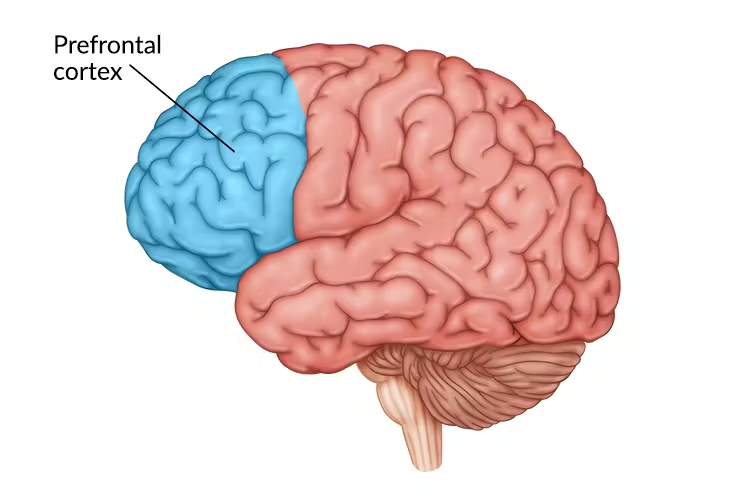CBT and Trauma - Reasons why CBT might not be working for you, and ways forward
Cognitive-behavioural therapy, or CBT, is one of the most popular therapy modalities around. It’s recommended for nearly every issue, from anxieties, to phobias, to PTSD, to depression, and more. Those who have attended therapy might have a first hand experience with CBT; it’s one of the modalities most studied in counselling programs, and most therapists are familiar with at least the general approach and tools.
Research shows that CBT can be an incredibly powerful modality that alleviates symptoms of anxiety and depression. It’s also a short-term modality, meant to last between 12-20 sessions. It’s extremely pragmatic, as well, giving clients tools that they can take with them beyond session.
And yet, as a therapist I hear this time and time again, “CBT just doesn’t work for me”. In this article we’ll explore why this might be the case if you experience trauma, and what we can do moving forward.
Why CBT Doesn’t Always Work for Trauma
Let’s get this out of the way; just because CBT isn’t working for you does not mean you’re somehow “defective”. Although CBT is often framed as a “catch-all therapy” that supposedly works for everything under the book, more and more research is coming out about its limitations, especially as it relates to trauma. Let’s break down what’s going on.
One of the main characterizations of CBT is that (as the C represents), it works with our Cognitions. Our cognitions are associated with our thinking, learning, and memory. It’s how we “logic”, and they live in the prefrontal cortex, a part of the brain located right at the top-front, behind our foreheads.
Here’s the big kicker; studies show that trauma deeply affects the prefrontal cortex. In the midst of our trauma, as we’re recalling our trauma, and even as we experience symptoms of our trauma, we experience a total decline in our ability to access this part of the brain.

Because our brain is experiencing danger and distress, it’s opting to light up the part responsible for dealing with those situations; our amygdala. This area of the brain plays a key role in processing emotions, especially fear and anger. In response to trauma, it can become hyperactive, causing the "fight, flight, freeze, or fawn" reaction to be triggered, even when there’s no real danger present.
These changes are measurable. During trauma experiences, if we were to put our brain under a scanner, the prefrontal cortex would show decreased activity, or shut down, and the amygdala would show increased activity and light up. It’s not imagined, it’s neurological.
A therapy style meant to work with our cognitions becomes really limited when the part of the brain responsible for cognitions is simply not accessible. It might even feel frustrating or distressing to be asked for evidence that things are okay when our bodies absolutely do not register with that evidence; “I know that, but I don’t feel that”.
It’s because your brain is reacting as if you're in danger. In that moment, logic and reasoning can’t override the emotional intensity driven by the amygdala. The prefrontal cortex is offline, so “reasoning” won’t get us very far.
How to Treat Trauma
So, if CBT doesn’t feel like the right fit, what now? Thankfully, there are very wonderful “bottom-up” options that address the roots of trauma and help us feel safe again in our own bodies.
Bottom up refers to any therapeutic method that begins with bodily and emotional experience before engaging the thinking mind. Because trauma hijacks the body and emotions first, and only then affects thoughts, these types of therapies help stabilize the body before asking us to analyze or reflect.

1. Somatic Therapy
This type of therapy focuses on the body’s role in storing trauma and on helping regulate the nervous system. It acknowledges that trauma isn’t just a story stuck in the mind, it’s a sensation stuck in the body.
These methods gently bring awareness to physical sensations, movements, and nervous system responses, allowing your body to complete survival responses that may have been frozen or stuck during trauma.
2. EMDR (Eye Movement Desensitization and Reprocessing)
EMDR is a structured therapy that helps people reprocess traumatic memories using bilateral stimulation (often eye movements).
It allows traumatic memories to be “unlocked” and integrated more adaptively, often reducing emotional reactivity without needing to talk through every detail of the event.
3. Polyvagal-Informed Therapy
This approach is based on Polyvagal Theory, which focuses on how the vagus nerve regulates safety, connection, and survival states.
Therapists work with your nervous system states, fight, flight, freeze, or fawn, to help you shift into a sense of safety and connection before diving into cognitive or emotional processing.
4. Internal Family Systems (IFS)
IFS works with the idea that we all have multiple “parts” within us, and trauma often pushes some parts into extreme roles.
It allows you to approach wounded or protective parts of yourself with compassion, rather than judgment or force, creating internal safety and healing.
Trauma Therapy in Toronto
If you're looking to address the impact of trauma in a way that feels safe, grounded, and actually effective, you're not alone, and you're not out of options. Healing is possible.
You can book a free, no-pressure 15-minute call to connect with one of our intake therapists. We’ll take the time to understand what you’re looking for and help you find the right fit, often with availability as soon as this week.






